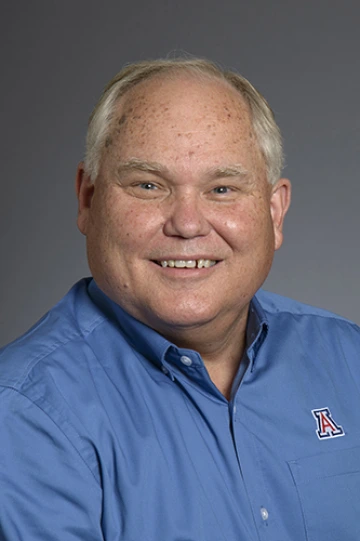One-on-One with Mentor Steve Larimore

UA alumnus Steve Larimore graduated with his bachelor’s degree in mechanical engineering in 1983, then earned his Master of Business Administration from the Eller College of Management in 1989.
Larimore retired from Raytheon after a 32-year career, serving as a mechanical engineering design department manager for Raytheon’s Precision Control Mechanisms and Harness/Interconnect, Missile Defense Systems, and Air and Land Warfare Systems.
He has been a mentor for the Engineering Design Program for two years, and was a sponsor for 13 years.
What inspired you to become a mentor in the first place?
I have a passion for solving engineering problems and helping young people to be successful. Being a mentor allows me to do both.
How have you benefited from the experience of being a mentor?
I have had several mentors throughout my life, and they have all helped me increase my knowledge. Probably the most important mentors in my life are my parents. My father is an engineer and my mother is a school teacher, so it is not surprising that today I am helping educate engineers.
How does being on a mentored design team help students in the professional world?
Mentors in the Engineering Design Program help the students use their knowledge to solve real-world problems. The mentors teach the students an engineering process that can be used on any engineering design problem. It is the process used in the professional world, so when the students enter the workforce, they will be familiar with the approach.
What’s your favorite team or project you have mentored, and why?
This is a hard question. I have enjoyed most of the projects I have mentored. I guess the ones that have been the most meaningful to me have been the ones that affect human health. I enjoyed mentoring the team that created the active elbow orthosis and the team that created the precision diagnostic reagent package. The active elbow orthosis helps people recover from elbow surgery and the precision diagnostic reagent package helps doctors diagnose cancer more quickly.
Describe an aha! moment you experienced while mentoring a design team.
The students, for the most part, are unaware of the real-world requirements. They don’t understand or consider that there are lead times for almost anything that you buy or have made. They do not appreciate that there are standard parts that, if you don’t make use of and instead make a unique one, your cost and lead time both increase.
The mentors help the students with their project schedules, making sure they have considered lead times and helping the students understand that it is imperative they use standard parts as often as possible.
What advice would you offer to others considering mentoring a design team?
You must have a passion for helping students succeed and be willing to put in lots of hours. The hours won’t be a problem if you have the passion.
How do employers benefit when they hire students who have been on a mentored senior design team?
The students are trained in a universal design approach that allows them to quickly adapt the employers’ design approaches. They have real-life design experience and they know how to work as part of a team, define requirements, create a schedule, meet deadlines, assess risks and implement contingency plans.
The Engineering Design Program does a wonderful job of preparing students for the work environment. As a former employer, I could see the difference between new hires that had been through a program like this one and those who had not. The new hires that had been through a program like the Engineering Design Program adapted and began contributing more quickly than the others.
Tell us something about yourself that people might be surprised to learn.
In 1982, I was a junior in mechanical engineering at the University of Arizona. At that time, there was no interdisciplinary engineering capstone class. Each department had its own.
Each year, the American Society of Mechanical Engineers sponsored a design competition that all the students in the mechanical engineering capstone class participated in. The winner and the first runner-up had the opportunity to represent the University of Arizona at a regional ASME competition, and the local ASME group paid the travel expenses.
The 1982 regional ASME competition was held in Hawaii. ASME did not have any rules that prohibited a junior from entering the competition, though traditionally only seniors entered, so I entered. I believe I am the only University of Arizona junior who ever won this competition.
What else would you like us to know?
I am a Wildcat for life. Both my parents and all four of my children and their spouses are alumni of the University of Arizona. We love the university.

